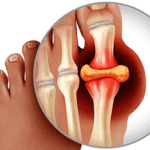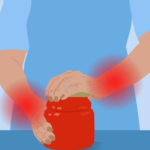An arm injury self-assessment can be a critical first step in determining the severity of your injury and deciding whether home treatment or medical intervention is necessary. This article provides a comprehensive guide to assessing arm injuries, helping you identify the type and severity of the injury, and offering tips for immediate care.
Understanding Different Types of Arm Injuries
Common arm injuries include:
- Strains and Sprains: These occur when muscles or ligaments are overstretched or torn. Symptoms include pain, swelling, and limited movement.
- Fractures: A broken bone can lead to intense pain, swelling, and deformity of the arm.
- Dislocations: Occurs when bones in a joint are forced out of position, typically seen in shoulders or elbows.
- Tendinitis and Bursitis: Overuse of the arm can cause inflammation in tendons or bursae, leading to pain and stiffness
Step-by-Step Arm Injury Self-Assessment
Assess Pain
- Mild pain may feel uncomfortable but doesn’t interfere with daily tasks.
- Moderate pain may affect your range of motion and make daily activities difficult.
- Severe pain could indicate a more serious injury like a fracture or dislocation. If pain is intolerable or worsens with movement, medical attention is recommended
Check for Swelling and Bruising
- Swelling often indicates internal damage, such as a sprain or fracture.
- Bruising may appear with muscle tears or bone fractures. If swelling and bruising are extensive, seek medical care
Evaluate Range of Motion
- Try gently moving your arm in various directions. If you’re unable to move the arm without pain, you might have a serious injury, such as a fracture or dislocation. Limited movement can also be a sign of tendinitis or a rotator cuff injury
Test for Strength and Grip
- Grip strength can provide valuable insight into nerve function and muscular injury. Weak grip or numbness may suggest nerve damage, such as ulnar or median nerve compression.
- Performing tasks like making a fist, gripping an object, or extending your arm against resistance can help you assess muscle function
Check for Numbness or Tingling
- Numbness or tingling could indicate nerve damage or a more severe injury. Loss of sensation in certain areas may point to specific nerve injuries (e.g., median, radial, or ulnar nerve damage)
When to Seek Medical Attention
- Visible Deformity: A clear sign of a fracture or dislocation.
- Severe Pain and Swelling: If your pain is sharp, intense, or the swelling doesn’t improve with rest, ice, or elevation.
- Loss of Movement or Function: If you cannot move your arm at all, or if the arm gives way when you try to lift something, you may need further diagnostic tests such as an X-ray
Immediate First Aid for Arm Injuries
- Rest and Immobilization: Avoid using the injured arm. Use a sling or splint to immobilize the area.
- Ice Therapy: Apply ice to reduce swelling and pain.
- Elevation: Keep your arm raised to minimize swelling.
- Over-the-counter Pain Relief: NSAIDs such as ibuprofen can help manage pain and reduce inflammation





